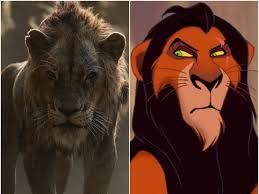This Weird Habit That Makes Us Hallucinate… And Buy Things!
I met a Jazz journalist once - nice guy, not that you care - and when I asked him why he chose this job, he told me something along these lines: 'I wanted to know why I liked the music I like'.
I was young, so it took me some years to understand what he meant. I think this article is a good enough reason to share this lesson. We live in a world that could be compared to an ocean of impressions; through our senses, we experience it, and the crazy part is that we add something to it: a reaction. We can all receive the same impression but react differently. For example, I don't like chocolate ice cream even though so many people love it. Why do I dislike that taste? No idea. What if we could know why we are the way we are? That's what the journalist was after. He didn't want to understand music, but himself. Aren't we all like him? There is something about understanding things about ourselves that makes us happy and excited, like meeting loved ones after a while.
What Is This Magic Habit?
Anthropomorphism. Yeah, I said it just like that. This word is way too long; it needs a sentence of its own. What does this word mean, and why am I using it? Well, it's the subject of this article. And you need to hear about it because it's engraved in your brain so deeply that it influences the very way you perceive reality. Sounds dramatic, but give it a chance.
Anthropomorphism is the act of seeing or giving human characteristics to non-human things. Like seeing a face in a cloud or believing your computer has emotions. It can also be the mascot of a sports team or the voice of an AI. Basically, our brains are wired to humanize things, and that impacts how we treat them.
Around us, loads of things are anthropomorphic, taking on human shape to be adopted more easily. Marketers know about this psychological mechanism and use it to sell. There was a study that showed that humanizing a product triggered a reaction called 'Beautiful is Good', which is a judgment we tend to have toward other humans. We trust and like people that we find attractive more easily - you could call that the 'beauty privilege'. In the study, people focused more on the products that were more eye-pleasing than the products that were less pretty but had more functionalities. Without anthropomorphism, the 'beauty privilege' had less impact. It was also proven that a humanized product grabbed the interest of consumers more easily.
How to Use Anthropomorphism In Marketing?
If you want to 'humanize' a product, you need to make your product act or look human.
Obviously.
It sounds so obvious that the best way to explain how to do it is by giving you examples.
You can make a car look human by giving it headlights that look like eyes or a grille that looks like a mouth.
In the case of an online product, you write its description in the first person. Instead of saying "this software does X and Y," you make it sound like the software itself is talking. "Hi there, I'm Software, and I'm here to make your life easier by doing X and Y." Suddenly, it's not just a tool; it's a helpful assistant.
If you're trying to sell an online course, you could give it a name as IKEA does with their furniture and make it seem like the course is actually alive, like a virtual mentor. "Meet Sofia, your personal guide to mastering social media marketing." Sounds way more personal as if the course can adapt to my needs.
Or take a look at those virtual assistants like Siri or Alexa. They've got names, voices, and even personalities of sorts. It's easier to ask Alexa to play your favorite song than to bark orders at a faceless device.
In the world of food, you've got characters like the Kool-Aid Man or Mr. Peanut. They're not just representing the product; they ARE the product. When you pour a glass of Kool-Aid, you're not just having a drink; you're hanging out with the Kool-Aid Man. Anthropomorphism is all around us, from the Geico Gecko to the Pillsbury Doughboy to the M&M's characters. And we can't help but feel a little bit of affection for them.
When Anthropomorphism Goes Wrong
Bring your product to life, but be careful because there is a fine line between cute/fun and creepy. That line, if crossed, makes you fall into the 'uncanny valley'. And it's tough getting out of that hole.
The uncanny valley is this strange phenomenon where something is almost human but not quite, and it makes us feel uneasy. Maybe you saw those robots that had faces that looked human but with unnatural expressions; that's what I'm talking about. It's a tricky thing to navigate because, on the one hand, you want your anthropomorphized creation to be relatable and engaging. But on the other hand, if you make it too human-like, you risk falling into that uncanny valley and creeping people out.
Just look at what happened with the first design for the Sonic the Hedgehog movie. They tried to make Sonic look more "realistic," with human-like teeth and eyes. And people lost their minds. It was objectively an ugly creation - it amazes me how no one at the studio thought it was a bad idea. In the end, they changed the design and made Sonic look way closer to its original form: cartoonish.
We can also look at the new Lion King movie. They went for a hyper-realistic CGI look, trying to make the animals look as lifelike as possible. But in doing so, they lost some of the expression and emotion that made the original animated characters so endearing. Simba looked like a real lion, sure, but they also looked a bit...soulless.
In both of those examples, the mistake was going for a realistic look.
Anthropomorphism requires balance; give your product human traits but keep yourself far enough away from realism.
Take some of the most successful anthropomorphic characters out there. Mickey Mouse, Bugs Bunny, the Pixar characters - they're not trying to be realistic humans or animals. They're stylized, simplified, exaggerated. But they still have those key human traits - expressions, personalities, the ability to talk, think and feel. That's the key to avoiding the uncanny valley - finding that balance. You have to know when to pull back, when to simplify, when to go for the essence of humanity rather than the details.
How powerful is anthropomorphism?
The USSR, the US, most European countries, almost everywhere in the world. Ideas have been carried by images, personified to make them stronger.
Uncle Sam is maybe the most famous one. An idea, when it takes human shape, is way more impactful.
Coca-Cola glass bottles mimic the shape of a woman. It's subtle; you probably didn't notice, but something in you found this shape attractive. You don't know why you like it, but you like it. That's the essence of passion and why this marketing tactic is so powerful.
But as with everything in marketing, you should always understand your audience first. Don't give the wrong human details to your products. Uncle Sam was an older-looking man for a reason; he needed to look like a wise and familiar face that knows what's best for the country and for you. Giving a sense of responsibility. This wouldn't have worked if the target audience was anyone other than young men in search of meaning and responsibility.
If you want an example of anthropomorphism targeting young women, we can talk about the Mini Cooper. Its headlights looking like round eyes makes it look cute and appealing to this audience.
Anthropomorphism is useless if not adapted to a specific audience. Find out what your target audience likes and why; these are the most important things you need to know. Anthropomorphism is one answer. You can also go check my article about the psychological levers that make people buy, to get an idea of other human mechanisms.
In The End
I think the Jazz journalist managed to understand music but not sure he understood why he wanted to understand it. Marketing is a bit like that, it’s easy to stay on the surface while believing we dug deep. I just wrote about anthropomorphism and I didn’t even scratch the surface of ‘why’ this is a thing. Why do we act this way toward inanimate objects? Why does the uncanny valley exists? To be good at marketing, we need to aim for those big questions that might never find answers. We need to never be satisfied by half-truths.
It’s nice to be able to convince potential clients, but it’s way more interesting to understand how we are made and why we act the way we do.
Marketing is anticipation. Anticipation is understanding. Let’s aim for understanding and we’ll be better at Marketing.






